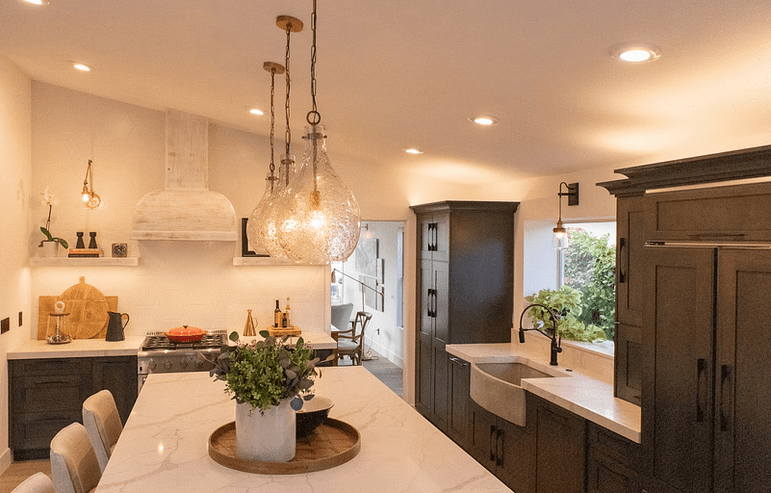Let’s be blunt. No one wants to prep dinner in a cave. Yet, that’s exactly what your kitchen starts to feel like when lighting gets overlooked. If you’ve been wondering why your kitchen feels off lately, take a closer look at your sink area. Need a head start? Check out these bright ideas for over-the-sink lighting that can fix that dim, soul-sucking corner fast.
Light affects more than what you see. It changes how you feel while doing everyday tasks. The wrong light in the wrong place can make cooking feel like a chore. Or worse, like punishment. Now, let’s see how bad lighting ruins your kitchen.
Why the Sink Gets Treated Like an Afterthought
We get it. The kitchen sink doesn’t exactly scream “showpiece.” It’s where dirty dishes live. But you use it more than you think—for rinsing, chopping, scrubbing, and sometimes just staring off into space while your brain resets. That’s prime real estate. Still, most homes stick one awkward bulb up top and call it a day. Bad move. The result? Harsh shadows, dull corners, and water spots that somehow multiply overnight.
Good Lighting Doesn’t Just Light, It Works

You’ve got to think about angles. A fixture slapped on the ceiling directly behind you throws your own shadow into the sink. That’s just a recipe for missed spots and maybe a cracked glass or two. Think pendants or wall sconces that aim straight down, not at your back. You don’t need a whole lighting plan, you just need a light that actually hits the right place.
Style Doesn’t Have to Take a Back Seat
Function first doesn’t mean ugly. Modern lighting gives you plenty of ways to combine form with purpose. Glass pendants, black matte finishes, and even retro copper shades can add character while still doing their job. More importantly, they make the sink area feel like a part of the kitchen, not just a forgotten utility zone.
Don’t Blame Your Cooking Skills Just Yet

Maybe your meals aren’t boring, you’re just making them in a place that feels lifeless. Bad lighting can drain your energy before the water even boils. You don’t need to rip out cabinets or install a skylight. A small change, like a focused fixture above your sink, could make all the difference. And honestly? It might even make dish duty a little more bearable. Give that tired corner a bit of attention. It might just become your new favorite spot in the kitchen.
You’d Be Surprised What It Fixes
If your sink space still feels like a laundry room, lighting can flip that. Lighting affects how clean your kitchen looks, not just how clean it is. Dim bulbs highlight stains and shadows. Good lighting spreads evenly, softening flaws and giving everything a warm glow. It also changes how big the space feels. A single bulb in the center of the ceiling leaves dark edges that shrink your kitchen visually. Add directional lighting above the sink, and suddenly you’ve got depth, contrast, and atmosphere.…






